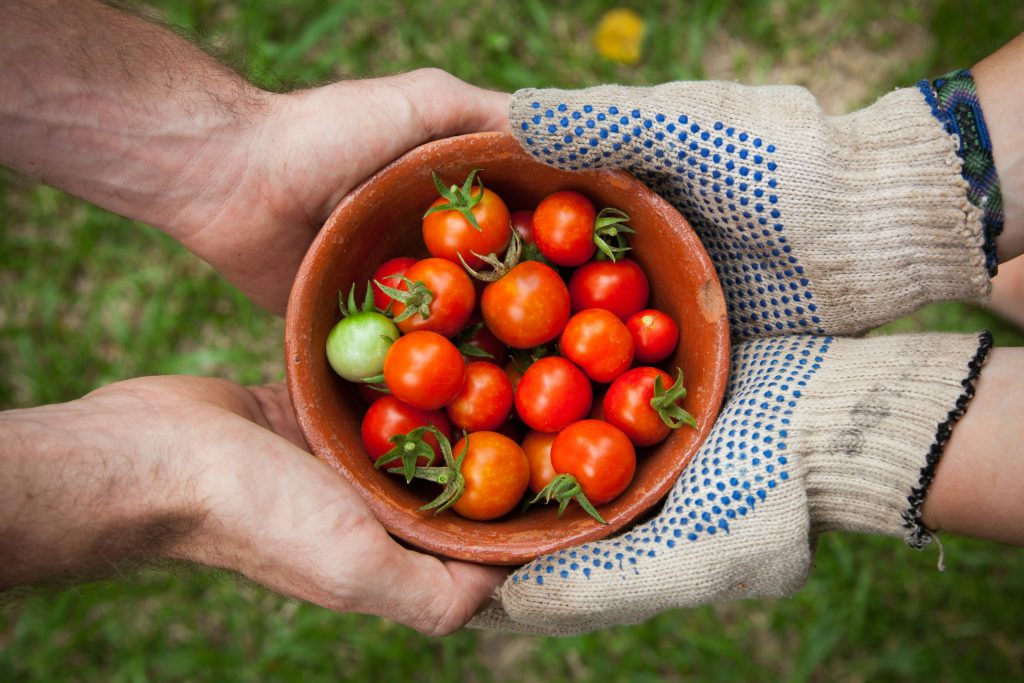The battle for food security is looming large and it's time investors take notice

In the face of mounting challenges across the United Nations’ Sustainable Development Goals (UN SDGs), the imperative for food security emerges as a critical concern.
The United Nations (UN) recently issued a call for urgent action on the
UN Sustainable Development Goals (UN SDGs)
To date, progress on over 50% of the SDG targets is insufficient. 1 Progress on 30% has either stalled or declined further, including key targets on poverty, hunger and climate. 2
In 2022, about 9.2% of the world population was facing chronic hunger, equivalent to about 735 million people – 122 million more than in 2019. An estimated 29.6% of the global population – 2.4 billion people – were moderately or severely food insecure, meaning they did not have access to adequate food. This figure reflects 391 million more people than in 2019.
United Nations’ Sustainable development goals report 2023
This distressing scenario is further compounded by the COVID-19 pandemic and the triple crisis of climate change,
Biodiversity
You might also like: The rising cost of inequality and what we can do about it as investors
The intersectionality of food security and broader crises
Current trends suggest that 575 million people will be living in extreme poverty by 2030. 3 The world is experiencing hunger levels not seen since 2005. Food prices remain higher in more countries than in the period 2015–2019, 4 indicating that affordability of food will be a problem for the foreseeable future.
The cascading climate and biodiversity crises put increasing pressure on agriculture. Nearly half of the world’s most productive soil (i.e. fertile) has disappeared to date. At the current rate of loss, the UN Food and Agriculture Organisation (FAO) estimates that the world may run out of topsoil within the next 60 years. 5
The Earth’s soils contain about 2,500 gigatons of carbon. 6 According to Columbia University’s Columbia Climate School, that’s “more than three times the amount of carbon in the atmosphere and four times the amount stored in all living plants and animals”. 7
Soil is essential for sequestering and storing carbon, so degraded and lost topsoil drastically reduces our ability to tackle the climate crisis. Chemical fertilisers and pesticides endanger ecosystem services such as pollination, which is considered an economic threat to global food security.
A working paper by the Organisation for Economic Co-operation and Development (OECD) estimates that the cost of nitrogen pollution, one of the largest contributors to biodiversity decline, for the European Union is between €70 billion and €320 billion per year. 8
Climate change has resulted in wetter, drier and more extreme weather patterns, increasing the likelihood of pests and diseases while profoundly changing what we grow and how we grow it.
Climate-related food stress can also lead to migration and conflict. 9 As one example, there’s evidence that the drought that preceded the Syrian war led to climate stress and a lack of resilience at the community level which, in part, contributed to the destabilisation in the country.
Food and agriculture are also often used as weapons of war. 10 The current war in Ukraine is an example of this. However, in this instance, destabilising Ukraine’s food supplies has had worldwide ramifications due to the importance of the country as a global exporter. 11
You might also like: What to think about when markets are volatile
A call to action for investors
It’s clear that our food system needs to be reevaluated, given its intersectionality with so many other crises we are facing. The proliferation of ultra-processed food and its impact on human health, 12 coupled with the ethical issue of food waste, 13 makes it imperative that we address the rising threat to food security. However, the question remains: How?
The UN’s SDG Stimulus to Deliver Agenda 2030 Report highlighted the need for an SDG-focused fiscal stimulus, calling for action in three areas:
- A massive surge in finance for development, enabled by a transformation in the business model of Multilateral Development Banks
- A new initiative on debt, under which short-term debt could be exchanged for longer-term instruments at lower interest rates
- The expansion of contingency financing to all countries in need. It can be achieved under the current rules and will enable immediate investments in basic services, clean energy and the digital transition.
We believe private finance should and can be just as supportive as government capital. It is clear that multilateral development finance institutions (DFIs) need to be better financed, and we reiterate our call for investors to support this. There’s a need for transformation in the business model of DFIs. One way that investors can support the reimagination of DFIs and the delivery of the UN SDGs is by investing in DFI bond issuances.
Moreover, swapping short-term debt for longer-term debt creates an environment where that debt can be linked to clear sustainability outcomes. Sovereign Sustainability Linked Bonds (SSLBs), like those recently issued by Chile, Uruguay and Ecuador, allow private investors to invest in state-level transformation linked to the UN SDGs. These instruments offer lower interest payments for better sustainability outcomes. For instance, by linking them to the reformation of the country’s food system, investors can support regenerative agriculture through a reimagination of subsidies.
The third point reaffirms the need to deliver on the $100-billion-a-year climate finance commitment, which was only just reached two years after the deadline. 14 The UN’s new $500-billion-a-year call for finance also raises questions about whether wealthier nations contribute enough to the collective pot. It’s clear many countries will need to look hard at their funding and policy activities, especially considering the ways in which food security transcends borders.
You might also like: Investing in food security
The role of private investment
Investors can support food security in several ways, such as investing in climate change solutions and in nutritious food through regenerative agriculture. 15
First, investing in women, especially smallholder farmers, can significantly impact food security. A 2022 report on the state of food security and nutrition in the world found that the gender food insecurity gap has widened from less than 2% in 2019 to more than 4% in 2021. According to the report, 32% of women are moderately or severely food insecure, compared to 28% of men.
Microfinance
Additionally, agricultural technology (“ag tech”) and the use of remote satellite sensing (geospatial data, which includes information related to locations on the Earth’s surface) can be used to monitor the impact of climate-induced food stress on biodiversity.
Two research papers from 2022 and 2023 highlight the power of geospatial mapping of food stress in policymaking and rapid response. By mapping the spatial dimension of food insecurity (access, availability, stability and utilisation), the research found clear evidence of a profound spatial disparity of food insecurity, enabling better policy-making and effective responses by farmers. Combining geospatial data with precision ag tech helps farmers make informed decisions on the amount and type of nutrients to put into the soil, the right amount of water required for a crop, the ideal amount of fertiliser and seed needed, and the level of tillage required at a specific location.
Accessing healthy and nutritious food is a basic human need, yet it remains a challenge in many parts of the world. Food security is not just a local concern; it’s a global challenge that demands our attention. By investing in food security, we can make a positive impact not only on people’s lives but also on the environment, economy, and geopolitics.
Footnotes
-
The Sustainable Development Goals Report: Special edition, United NationsScroll to footnote
- Scroll to footnote
- Scroll to footnote
- Scroll to footnote
-
Only 60 Years of Farming Left If Soil Degradation Continues, Society of Environmental JournalistsScroll to footnote
-
Can Soil Help Combat Climate Change?, Columbia Climate SchoolScroll to footnote
- Scroll to footnote
-
Managing the Biodiversity Impacts of Fertiliser and Pesticide Use, Organisation for Economic Co-operation and Development (OECD)Scroll to footnote
-
Report on The Impact of Climate Change on Migration, The White HouseScroll to footnote
- Scroll to footnote
-
Wheat export value from Ukraine 2022, StatistaScroll to footnote
-
Ultra-processed food linked to increased type 2 diabetes risk, Diabetes.co.ukScroll to footnote
- Scroll to footnote
- Scroll to footnote
-
How collaboration on regenerative agriculture can strengthen food security, World Economic ForumScroll to footnote
-
Does microcredit use helps farmers win battle against food insecurity: evidence from Jimma zone of Southwest Ethiopia, Biomed CentralScroll to footnote
-
Micro-finance and the empowerment of women, International Labour OrganizationScroll to footnote





